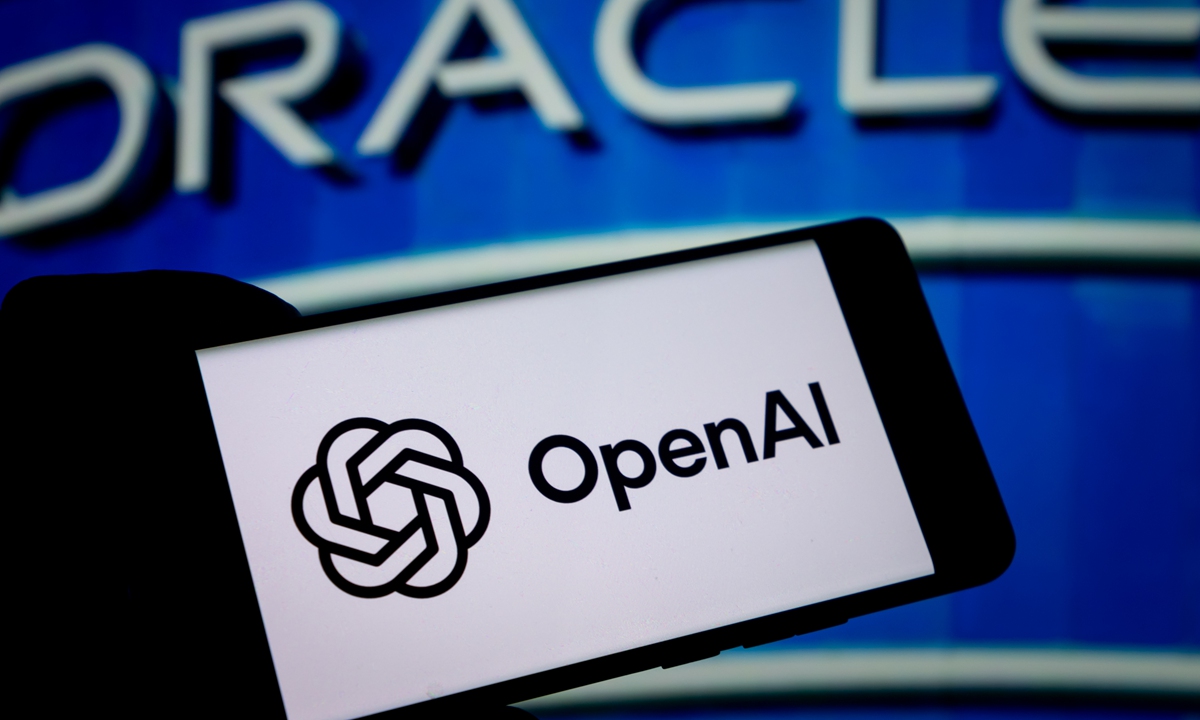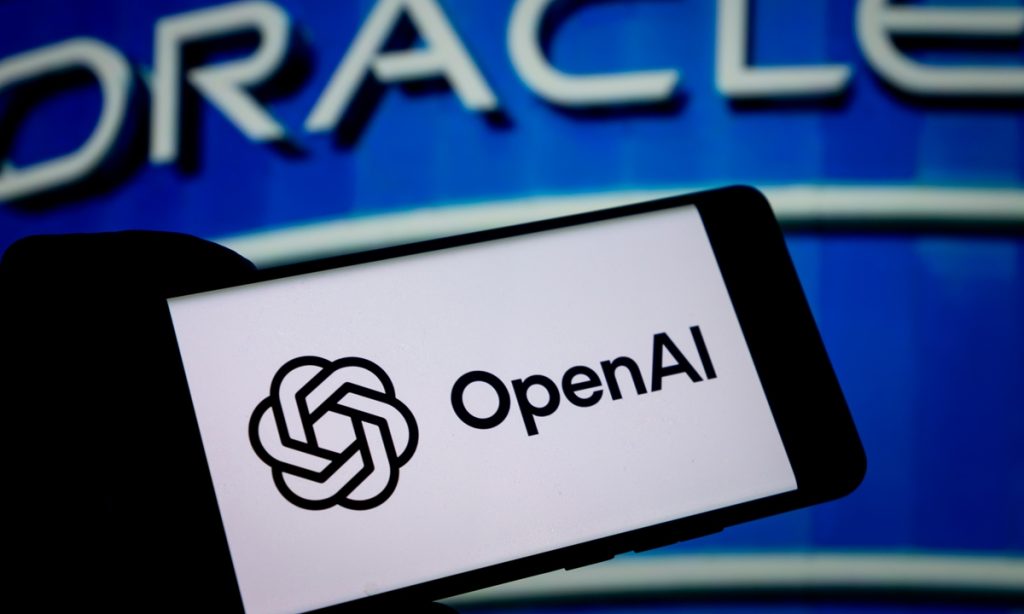
Photo: VCG
The US’ artificial intelligence (AI) company OpenAI recently put a spotlight on a Chinese AI startup that it believes is on the “front line” of “China’s race to lead the world in AI,” the CNBC reported. The Chinese company is portrayed to “represent a threat to OpenAI, which has received Washington’s support to promote its foundational models as the world’s go-to AI offering,” according to the report. In a blog post published on June 25, the company wrote that the Zhipu AI has made “notable progress” in the AI race, as global competition ramps up.
As of press time, Zhipu AI has not responded to interview requests from the Global Times. Experts noted that while American AI giants lead in technology, Chinese companies hold considerable advantages in engineering implementation and market scale. Amid “pressure from Chinese companies,” OpenAI, as an industry leader, is also facing fierce competition from within the US.
True motives questioned after ‘naming’ a Chinese company
According to the CNBC report, while fellow “AI tiger” DeepSeek has received the “lion’s share of international attention” after it released its R1 model in January, OpenAI suggested that “Zhipu’s expansion outside China and its ties to Beijing deserve more scrutiny.” Zhipu AI reportedly has offices in the Middle East, the UK, Singapore, and Malaysia, and is also running joint “innovation centers” projects across Southeast Asia, including in Indonesia and Vietnam, read the report.
Founded in 2019, Zhipu is regarded by Chinese media as one of the “six AI tigers” among domestic large-scale AI model companies. According to its official website, the AI company is dedicated to developing a new generation of cognitive intelligent large models, focusing on Chinese innovation in large-scale AI models. In April, Zhipu registered a counseling agreement with the China Securities Regulatory Commission (CSRC), becoming the first of the “six AI tigers” to formally initiate the IPO process. It is reported that Zhipu aims to list on the A-share market as early as 2026.
A source familiar with the long-term development of the AI sector in China told the Global Times that American AI companies, including OpenAI, face intense talent competition and persistent funding gaps. Naming a Chinese company may be an attempt to draw attention from the US government, the source said.
Global media have also questioned OpenAI’s motives. India’s Analytics India Magazine (AIM) reported that OpenAI’s blog post seems less concerned with model performance and more alarmed about the architecture of influence. VC Bill Gurley questioned OpenAI’s motives in spotlighting Zhipu AI, suggesting the move may have unintended consequences. “Very odd decision for OAI to openly promote this Chinese AI company ‘Zhipu AI’ in a blog post,” he wrote on X. He suggested that the action taken simply boosts competitors’ visibility among both funders and customers, effectively putting them on the map.
Bi Qi, chief scientist of China Telecom Corp Ltd and an academician at the Nokia Bell Labs in the US, told the Global Times that based on current reports, OpenAI did not highlight any technical superiority of Zhipu in AI but instead focused on Zhipu’s success in fundraising and the number of its overseas offices. “From this perspective, they aim to amplify Zhipu’s fundraising success, particularly emphasizing its success in securing funds from Chinese government channels, to lobby the US government to introduce policies favorable to OpenAI or even provide direct financial support,” Bi said.
He added that AI development is currently in a phase of heavy investment, and American AI companies hope to strengthen their funding chains through such publicity.
Since the beginning of this year, US tech giants have invested unprecedented sums in the AI sector. Microsoft has confirmed that it will lay off as many as 9,000 workers, in the technology giant’s latest wave of job cuts this year. Microsoft has set out plans to invest heavily in AI, and is spending $80 billion in huge data centers to train AI models. Google announced a $75 billion investment plan for AI infrastructure earlier this year, while Meta plans to allocate $65 billion to support its AI goals, Reuters reported.
However, the rapid rise of China’s AI industry has instilled a sense of urgency among Silicon Valley giants. A July article in The Wall Street Journal titled “China is quickly eroding America’s lead in the global AI race” noted that “Chinese artificial-intelligence companies are loosening the US’ global stranglehold on AI, challenging American superiority and setting the stage for a global arms race in the technology.”
Deep-seated concerns of US AI giants
Zhipu represented the nation’s “hopes of building a self-reliant, globally competitive AI ecosystem that rivals America’s and lessens dependence on American tech,” OpenAI said.
Reuters reported that OpenAI has also built partnerships and attracted investment across the Middle East and Asia. Its “OpenAI for Countries” initiative helps interested governments develop “sovereign AI capability” in coordination with the US government.
OpenAI previously stated it plans to invest in infrastructure outside the US to run AI systems, as an overseas extension of its US AI data center project “Stargate.” During a visit to the UAE in May, US President Donald Trump announced over $200 billion in commercial deals in the region, including one for building a Stargate UAE AI campus by OpenAI, Oracle, Nvidia, and Cisco Systems. It’s expected to be launched in 2026, according to media reports.
“This is the US building walls,” Analytics India Magazine analyzed, noting that “OpenAI’s unease isn’t just about competition. It’s about losing narrative control.” While the US has been aggressively promoting its AI stack globally through Project Stargate and government deals, trade missions, and strategic partnerships, China’s quiet, infrastructure-first approach may prove more enduring, read the report.
Bi told the Global Times that, from the current trajectory, US giants like OpenAI and Meta, which initially advocated for open-source development, have shifted toward closed-source models. This reflects a lack of confidence in their technological leadership and monopoly status. “It is well-known in the internet industry that it’s a winner-takes-all game. However, US companies currently face a dilemma in their business strategy,” Bi explained. “Should they follow Google’s Android model, using open-source to capture the global market, or Apple’s model, leveraging technological superiority to create an exceptional user experience and lock in customers? This is a tough choice for US giants.”
Bi believes that, as a general rule, market leaders prefer Apple’s straightforward, aggressive business model, while challengers will strive to compete through an open-source approach. The global market shares of Android and Apple in smart devices demonstrate that open-source models pose a significant challenge to technologically leading companies. “This may be one reason why the early-stage overseas expansion of Chinese AI companies is striking a nerve with US giants.”
Since the beginning of this year, both the US and China have seen rapid momentum in AI development. Bi noted that technologically, US giants lead China by a considerable margin. “This is why they opt for closed-source models. If they stick to closed-source while pursuers adopt open-source, it could create significant commercial impact for the leaders.”
Bi believes that, despite the technological lead of US AI giants, Chinese companies have notable advantages in engineering implementation and market scale. Therefore, even if US giants maintain their technological edge, Chinese companies could capture a significant share of the global market through open-source strategies. “This is likely why US giants are deeply concerned. To mitigate this risk, a US AI giant must build enough confidence to stick with open-source and lead globally with its technological advantage.
A ‘talent war’ looms
The Wall Street Journal analyzed that while American AI companies give priority to the pursuit of major breakthroughs in a race to build AI, China’s AI industry is focused far more on using AI to build practical applications — an emphasis that could help it win new users quickly.
“The No. 1 factor that will define whether the US or China wins this race is whose technology is most broadly adopted in the rest of the world,” Microsoft President Brad Smith said at a recent US Senate hearing, according to the Wall Street Journal.
According to Singaporean media outlet Lianhe Zaobao, amid the global wave of digitization and intelligence, Chinese AI companies are beginning to shine on the international stage, leveraging their technological advantages and innovation capabilities. An industry report indicates that as of October 2024, China had 918 AI companies, with 203 of them pursuing overseas expansion, an internationalization rate exceeding 22 percent. The report noted that the vast majority of Chinese AI companies expanding abroad focus on application-layer products.
The report reveals that in 2025, Chinese AI applications have seen rapid growth in both product types and numbers. Many Chinese companies view Southeast Asia as a key destination for expansion, where content-driven e-commerce platforms like TikTok, Shopee, Lazada, and Temu are experiencing significant growth. The Global News Network reported that as trade between China and ASEAN deepens, the rapid development of the AI industry has opened new application areas, further promoting regional economic cooperation and reshaping regional industrial patterns.
Meanwhile, the “involution-style” competition among US tech giants in the AI race is intensifying, with the talent war between OpenAI and Meta becoming a focal point. Fortune magazine reported on July 5 that in Silicon Valley’s heated “AI hegemony race,” jaw-dropping high salaries have been a key tool for giants to attract talent. However, OpenAI, as the industry leader, is grappling with how to attract and retain top talent.
According to multiple sources, Meta offered OpenAI employees signing bonuses of $100 million , with some contracts reaching as much as $300 million over four years. The offers have been described as “staggering” and are among the highest compensation packages in Silicon Valley history, according to media reports.
According to WIRED, OpenAI executives have called Meta’s hiring tactics “invasion.” After losing at least eight top researchers, including four in just one week, OpenAI’s research director Mark Chen reached out to the team with a promise that management is working around the clock to retain talent.
The relationship between OpenAI and its long-term partner and major investor, Microsoft, has also deteriorated recently. The Wall Street Journal reported that OpenAI wants to loosen Microsoft’s grip on its AI products and computing resources, and secure the tech giant’s blessing for its conversion into a for-profit company. Microsoft’s approval of the conversion is key to OpenAI’s ability to raise more money and go public.
According to the Wall Street Journal, the negotiations have been so difficult that in June, OpenAI’s executives discussed what they view as a nuclear option: Accusing Microsoft of anticompetitive behavior during their partnership, people familiar with the matter said. That effort could involve seeking federal regulatory review of the terms of the contract for potential violations of antitrust law, as well as a public campaign, sources said in the report.
Such a move could threaten the companies’ six-year relationship, widely seen as one of the most successful partnerships in tech history. For years, Microsoft fueled OpenAI’s rise in exchange for early access to its technology, but the two sides have since turned into competitors, making it more difficult to find common ground, according to the report.

